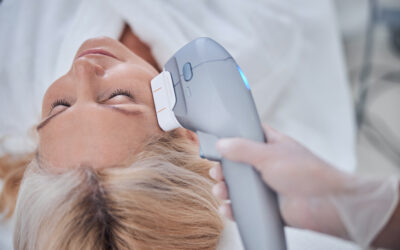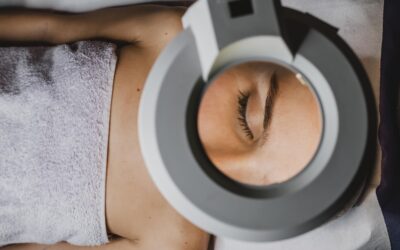If you’ve been searching for real CO2 Resurfacing Before and After results, you’ve likely seen photos that look too good to be true. But what does this treatment actually deliver? Understanding the evolution of CO2 laser resurfacing is key to knowing what it can—and cannot—do for your skin today. Modern technology has transformed the procedure, making it safer, more precise, and capable of producing dramatic improvements in skin texture, tone, and overall radiance.
The Evolution of CO2 Technology
CO2 laser resurfacing has come a long way from its early days. If you’ve heard horror stories about weeks of downtime, severe pain, Freddy Krueger resemblances and unpredictable results, those concerns were largely valid with older technology. Traditional CO2 lasers were quite aggressive, often removing large areas of skin uniformly, which led to extended healing times and higher risks of complications.
The older systems had some significant limitations that made many people hesitant to pursue treatment. Recovery could take several weeks, with patients experiencing significant swelling, oozing, and discomfort. The risk of hyperpigmentation (skin darkening), particularly in darker skin tones, was also a real concern. Many people who could have benefited from CO2 resurfacing simply couldn’t commit to such extensive downtime.
The Game-Changer: Deka Tetra CO2 Technology
Enter the Deka Tetra CO2 laser system, which has truly transformed what CO2 resurfacing can accomplish. This advanced technology represents a significant leap forward in precision, comfort, and results. The Deka system uses fractional technology, which means it creates microscopic treatment zones while leaving surrounding healthy tissue intact. This approach dramatically reduces healing time while still delivering powerful results.
What makes the Deka Tetra particularly impressive is its ability to customize treatment depth and intensity based on your specific skin concerns and healing capacity. The system can target different layers of the skin with remarkable precision, addressing surface issues like sun damage and texture while simultaneously stimulating deeper collagen production for firmness and smoothness.
The difference in recovery is remarkable compared to older systems. While you’ll still need some downtime, most patients with Deka Tetra treatments find their skin is significantly more comfortable during healing (redness and some slight swelling only), and the visible improvements begin appearing much sooner. The risk of complications has also been greatly reduced with this more sophisticated approach.
What CO2 Resurfacing Can Beautifully Address
CO2 laser resurfacing truly shines when it comes to certain skin concerns, and the results can be genuinely transformative. Fine lines and wrinkles around the eyes, mouth, and forehead respond exceptionally well to treatment. You can expect to see these lines soften significantly, with many clients amazed at how much younger their skin appears.
Sun damage is another area where CO2 excels. Those brown spots, age spots, and areas of uneven pigmentation that have been bothering you for years can be dramatically improved. The laser essentially removes the damaged surface layer, revealing fresh, more evenly toned skin underneath.
Acne scarring is perhaps one of the most rewarding concerns to treat with CO2 resurfacing. Whether you’re dealing with rolling scars, boxcar scars, or general texture irregularities from past breakouts, the laser can significantly smooth and improve the skin’s surface. Many clients describe feeling confident going makeup-free for the first time in years after their treatment.
Skin texture improvements are often the most noticeable changes clients experience. That rough, uneven surface texture that makes makeup application difficult becomes smoother and more refined. The laser stimulates new collagen production, which continues to improve your skin’s texture and firmness for months after treatment.
Overall skin tone and brightness also see remarkable improvement. The treatment removes dull, damaged surface cells and stimulates the production of fresh, healthy skin. Many clients describe their skin as having a natural glow that they haven’t seen in years.
Setting Realistic Expectations: What CO2 Cannot Do
While CO2 resurfacing is incredibly effective for many concerns, it’s important to have realistic expectations about what it cannot achieve. Deep, established wrinkles, particularly those caused by muscle movement, should improve but won’t ever disappear completely. Think of deep forehead lines or pronounced crow’s feet—while they’ll soften, you may still need additional treatments like neurotoxins (Botox, Dysport) for complete correction.
Skin laxity or significant sagging cannot be fully addressed with CO2 resurfacing alone. While the treatment does provide some tightening effects through collagen stimulation, it cannot replicate the results of surgical procedures for significant skin drooping. The laser works beautifully for mild to moderate skin tightening, but major sagging requires different approaches.
Very deep acne scars, particularly ice pick scars, may require multiple treatments or combination approaches for optimal results. While improvement is certainly possible, complete elimination of very deep scarring may not be achievable with a single treatment.
Active acne should be well-controlled before CO2 treatment. The laser is excellent for treating acne scarring, but it’s not designed to address active breakouts. You’ll want to have your acne managed before considering resurfacing.
Melasma and hormonal pigmentation can be tricky with any laser treatment, including CO2. While some improvement may occur, these conditions are often triggered by hormonal factors that the laser cannot address, and results can be unpredictable. Laser’s heat can worsen Melasma, so preparation prior to the C02 is very important, by using Hydroquinone products to calm down the pigmentation.
What to Expect in Your Before and After Journey
Your before and after transformation will unfold over several months, not days. Immediately after treatment, your skin will be red and swollen, similar to a sunburn. This is completely normal and expected. Within the first week, you’ll notice flaking skin as the damaged surface skin is shed.
After 7-10 days, you’ll start to see the emergence of your new skin. This fresh skin will initially be pink and sensitive, but you’ll begin to notice improvements in texture and tone. Many clients are surprised by how smooth their skin feels and how glowing it looks, even at this early stage.
The most dramatic improvements typically become apparent around the one to three-month mark. This is when collagen production really kicks in, and you’ll see continued improvement in firmness, smoothness, and overall skin quality. Some clients continue to see improvements for up to six to nine months post-treatment as collagen remodeling continues.
Making the Decision That’s Right for You
CO2 laser resurfacing with modern technology like the Deka Tetra system can provide truly remarkable results for the right candidate. The key is having realistic expectations and understanding both the benefits and limitations of the treatment. If you’re dealing with sun damage, fine lines, texture issues, or acne scarring, and you can commit to proper aftercare and sun protection, CO2 resurfacing could be transformative for your skin.
The most important factor in your success will be choosing an experienced provider who uses advanced technology and can customize your treatment to your specific needs. Don’t hesitate to ask to see before and after photos of patients with similar skin concerns to yours, and make sure you’re comfortable with the proposed treatment plan before moving forward.
Remember, the goal isn’t perfection—it’s significant improvement in the skin concerns that bother you most. When performed correctly with modern technology, CO2 resurfacing can help you achieve smoother, more youthful-looking skin that makes you feel confident and beautiful in your own skin.




